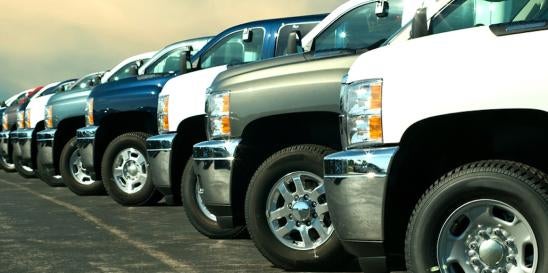On March 29, 2024, the Environmental Protection Agency (EPA) finalized its Greenhouse Gas Emissions Standards for Heavy-Duty Vehicles – Phase 3 for model years 2027 through 2032. These standards will apply to heavy-duty vocational vehicles, including delivery trucks, refuse haulers, public utility trucks, tractors, and transit, shuttle, and school buses. These rules replace the Phase 2 greenhouse gas (GHG) standards for on-highway heavy-duty trucks and engines that were promulgated established in 2016. The new rule will be effective 60 days after publication in the Federal Register.
These rules complete the EPA’s Clean Trucks Plan for reducing greenhouse gas emissions. The other rules that are parts of this plan are: the EPA’s March 20, 2024, final Multi-Pollutant Emissions Standards for Model Years 2027 and Later Light-Duty and Medium-Duty Vehicles (which covers passenger cars and Class 2b and 3 trucks) and the 2023 Final Rule and Related Materials for Control of Air Pollution from New Motor Vehicles: Heavy-Duty Engine and Vehicle Standards (the 2023 heavy-duty NOx final rule).
Perhaps the most notable aspect of this Phase 3 final rule is the lengths the EPA went to weigh the voluminous and intense public comments and thread the needle to balance the competing interests in order to set reasonable annual GHG emission reduction goals for heavy trucks while allowing manufacturers the time and flexibility needed to meet those standards.
The agency received more than 175,000 comments on the proposed rule. The pre-publication version of the Phase 3 Final Rule fills 1,155 pages. After assessing the import of the comments, the EPA determined it should apply a balancing test for the 2027-2032 period, saying: “In consideration of the opposing concerns raised by commenters, EPA believes it is critical to balance the public health and welfare need for GHG emissions reductions over the long term with the time needed for product development and manufacturing as well as infrastructure development in the near term.”
As a result, the EPA noted in the final rule:
After further consideration of the lead times necessary to support both the vehicle technologies’ development and deployment and the infrastructure needed, as applicable, under the potential compliance pathway’s technology packages described in Section ES.C.2.iii, EPA is finalizing GHG emission standards for heavy duty vehicles that, compared to the proposed standards, include less stringent standards for all vehicle categories in MYs 2027, 2028, 2029 and 2030. The final standards increase in stringency at a slower pace through MYs 2027 to 2030 compared to the proposal, and day cab tractor standards start in MY 2028 and heavy heavy-duty vocational vehicles start in MY 2029 (we proposed Phase 3 standards for day cabs and heavy heavy-duty vocational vehicles starting in MY 2027). As proposed, the final standards for sleeper cabs start in MY 2030 but are less stringent than proposed in that year and in MY 2031, and equivalent in stringency to the proposed standards in MY 2032. Our updated analyses for the final rule show that model years 2031 and 2032 GHG standards in the range of those we requested comment on in the HD GHG Phase 3 NPRM are feasible and appropriate considering feasibility, lead time, cost, and other relevant factors as described throughout this preamble and particularly Section II. … Our assessment of the final program as a whole is that it takes a balanced and measured approach while still applying meaningful requirements in MY 2027 and later to reducing GHG emissions from the HD sector.
The agency left it to each manufacturer to choose the specific emissions control technologies to meet the performance standards, including advanced internal combustion engine vehicles, hybrid vehicles, plug-in hybrid electric vehicles, battery electric vehicles, and hydrogen fuel cell vehicles.
However, to help pave the way for transition to electric freight vehicles, earlier in March the Biden administration announced a National Zero Emission Freight Corridor Strategy to accelerate the build out of electric vehicle (EV) charging and hydrogen refueling stations along our nation’s freight corridors and at truck depots within freight hubs.
In a further nod to the voluminous divergent comments, the EPA committed in the final rule to actively monitor both manufacturer compliance and the major elements of heavy-duty technology and supporting infrastructure development. The EPA said it will issue periodic reports that will track electric charging and hydrogen refueling infrastructure buildout throughout Phase 3 implementation. The agency also will evaluate and report on zero- and low-GHG emitting heavy-duty vehicle production; the evolution of heavy-duty battery production; and the availability of materials critical to that production (including the viability of supply chains).
According to the EPA’s press release, although the final Phase 3 standards are not as stringent as those proposed earlier, the EPA’s latest modeling shows the final standards will result in greater reductions of pollution than the proposed rule. The EPA estimates that the final rule will avoid nearly 1 billion tons of GHG emissions from 2027 to 2055, a significant contribution toward limiting climate change, and will produce $13 billion of annualized benefits through 2055, which will include $10 billion in annualized climate benefits. The final standards also are projected to reduce air pollution for the 72 million people who live near major truck freight routes who bear a disproportionate burden of exposure to higher pollution levels.



 i
i


